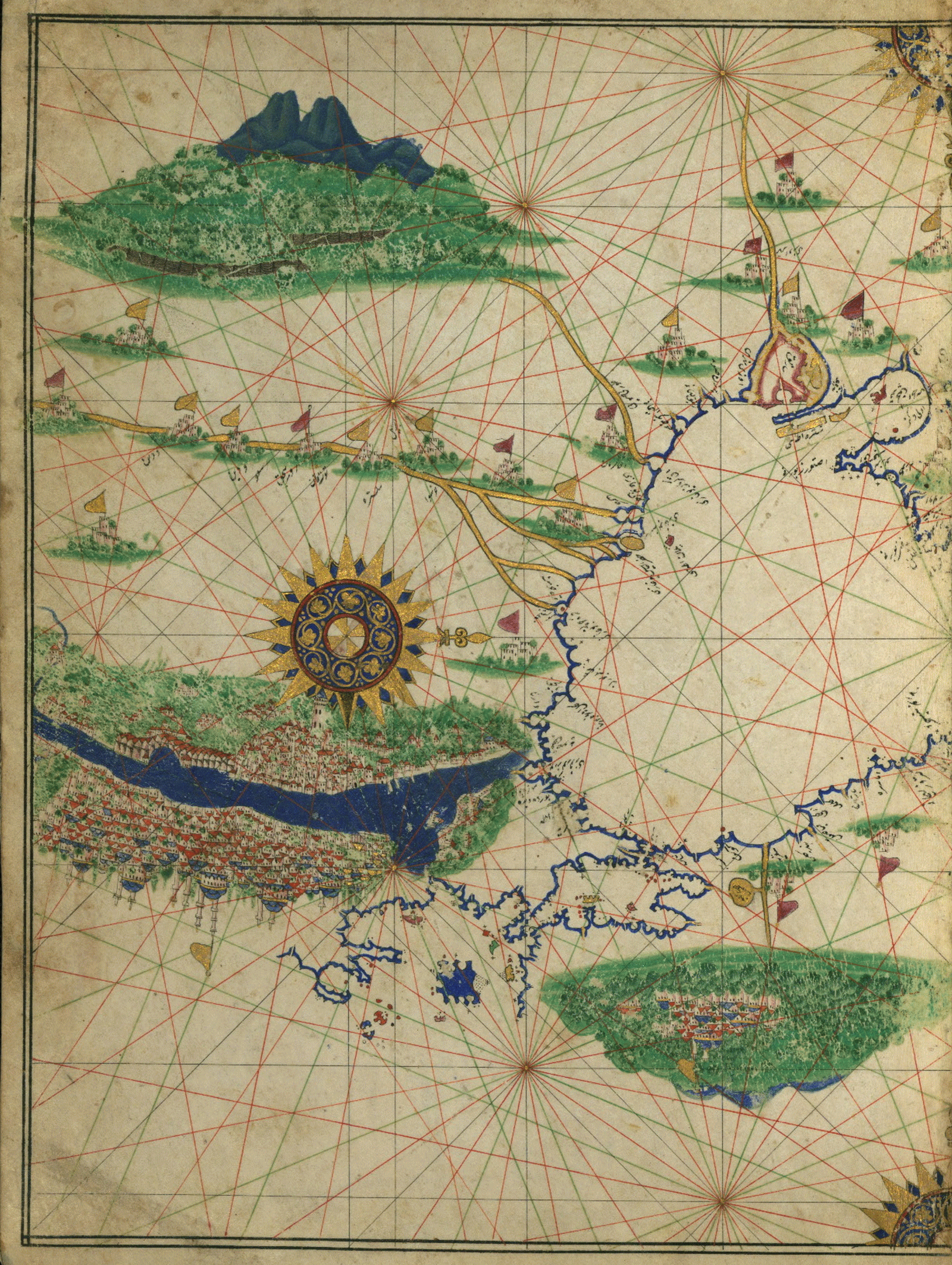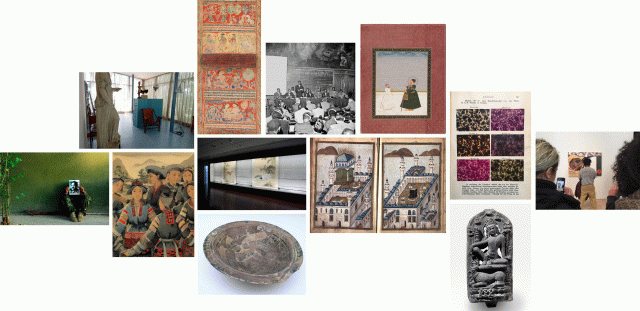Art Histories Seminar
Nadja Danilenko: Grasping the World in Ottoman Istanbul. Cartography between Tradition and Art in the 16th Century

Deniz atlası, map of the Western part of the Black Sea and the city of Istanbul, The Walters Art Museum, MS. W. 660, CC BY-NC-SA 3.0.
The sixteenth century marked the Ottoman Empire's political and cultural expansion. After Sultan Mehmed II (r. 1444-46 and 1451-81) had conquered Constantinople in 1453, Istanbul became the hub for manuscripts, scholars and artists. Not only did craftsmen and goods enter the Ottoman capital as confiscations from Syria, Egypt and the Hejaz, they also came to Istanbul as gifts from rivals such as the Safavids in Iran and the Habsburgs in Europe. As a result, Istanbul was brimming over with manuscripts that inspired Ottoman translations as well as adaptations – inter alia in geographic literature. As the elites began circulating old Arabic and Persian works, coeval European contributions such as Ortelius' (d. 1598) atlas Theatrum Orbis Terrarum and new Ottoman literature dealing with the empire or the New World, cartographers and artists transformed representations of the world and its marvels.
These transformations take center stage in my new project that investigates how world views were negotiated through cartographic depictions. By tracing which motifs transferred from other genres into cartography and prevailed in sixteenth-century manuscript copies, the project will explore how meaning was attributed to the regions of the world. Moreover, the project examines what role geographic literature played for elite and non-elite audiences. By taking stock of geographic manuscripts, the project will reconstruct what treatises were en vogue, who owned copies and how readers engaged with the material, thus receiving various traditions of knowledge.
Nadja Danilenko is a postdoctoral fellow at the Cluster of Excellence "Understanding Written Artefacts: Material, Interaction and Transmission in Manuscript Cultures" at the Universität Hamburg and the Berlin Graduate School Muslim Cultures and Societies (BGSMCS). She completed her PhD in 2018 in Islamic Studies at the Freie Universität Berlin (BGSMCS). Her thesis examined the first preserved cartographic work from the Islamicate world (al-Iṣṭakhrī's Book of Routes and Realms, 10th c.) and its transmission. Nadja's research interests revolve around the history of cartography and knowledge, with a special focus on manuscripts. Nadja hosts a German podcast about the history and culture of the Islamicate world that caters to a broad audience ("tell me a history – erzähl mir eine Geschichte," https://tellmeahistory.net).
08. Juli 2019, 17:00 Uhr
Forum Transregionale Studien
Wallotstr. 14
14193 Berlin
www.forum-transregionale-studien.de
Hinweis
Diese Veranstaltung wird durch Fotografien und/oder Videoaufnahmen dokumentiert. Falls es nicht Ihre Zustimmung findet, dass das Kunsthistorische Institut in Florenz Aufnahmen, auf denen Sie erkennbar abgebildet sein könnten, für die Veranstaltungsdokumentation und Öffentlichkeitsarbeit (z.B. Social Media) verwendet, bitten wir um eine entsprechende Rückmeldung.



